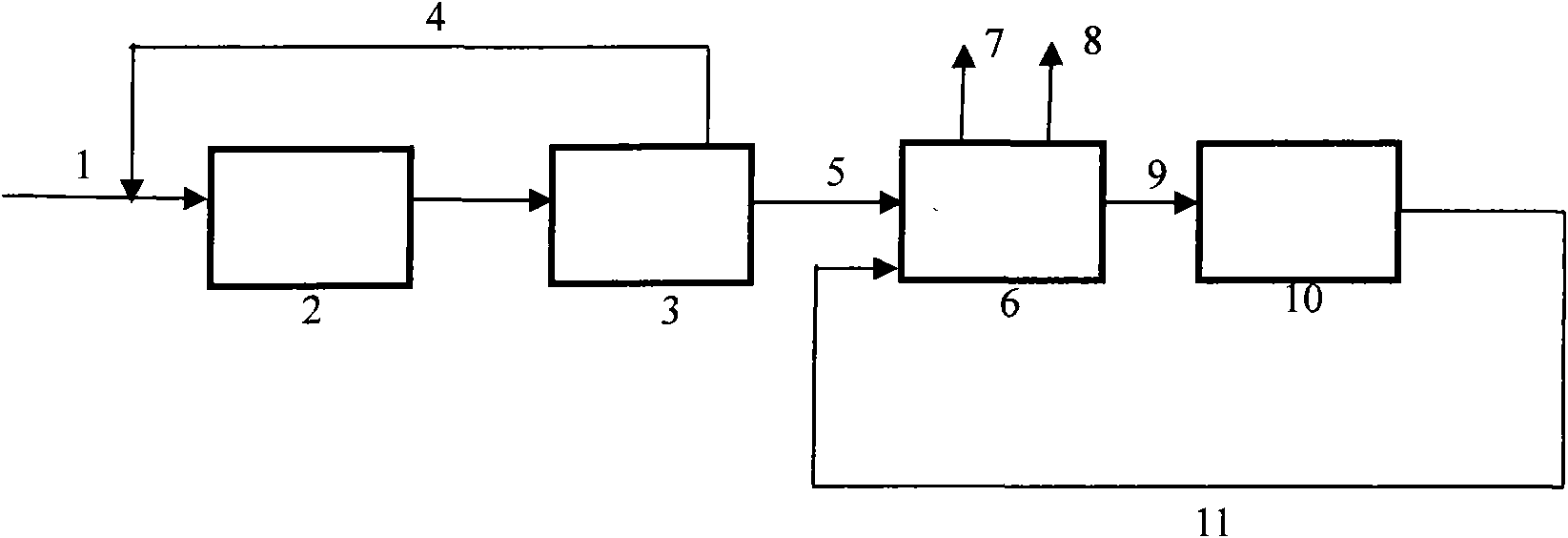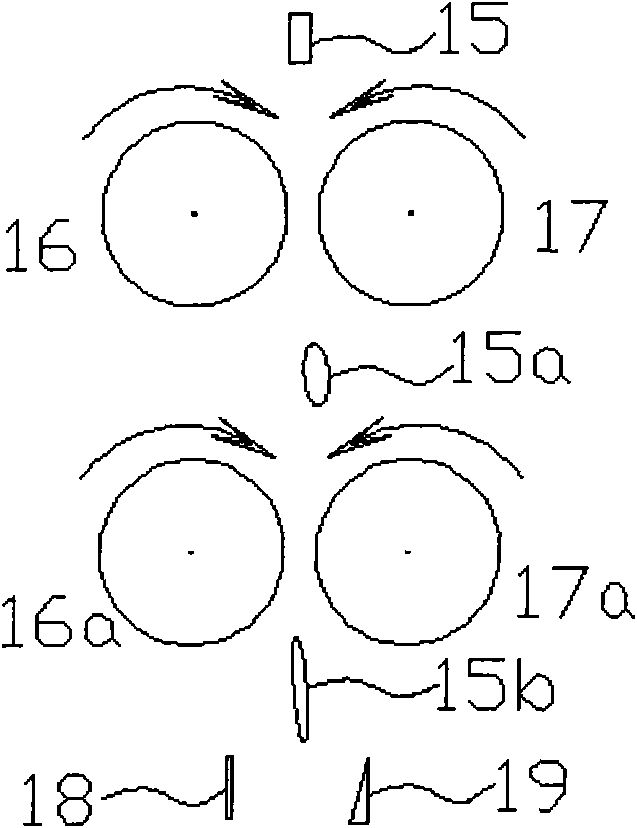Method for separating metal of waste wire from plastic sheath and device thereof
A technology of waste wire and separation method, applied in circuits, electrical components, electronic waste recycling, etc., can solve the problems of incomplete separation of metal wire and plastic skin, noise pollution, tool wear, etc., to avoid wearing plastic skin and metal wire. , The effect of improving processing capacity and improving cutting efficiency
- Summary
- Abstract
- Description
- Claims
- Application Information
AI Technical Summary
Problems solved by technology
Method used
Image
Examples
Embodiment 1
[0035] like figure 1 As shown, the waste electric wire 1 is sent to the waste electric wire cutting machine 2 and cut into short sections (the short section is 2.5mm), and then sent to the long and short section separator 3, and the long section 4 is returned to the entrance of the waste electric wire cutting machine 2. The short joints 5 separated by the long and short joint separator 3 are sent to the plastic sheath and metal wire separator 6, and the respectively separated plastic sheath 7 and metal wire 8 are discharged out of the system. The short joint 9 with the plastic sheath and the metal wire not separated is sent to the plastic sheath and metal wire stripping machine 10, and the roller rotated between the two rollers with different relative speeds deforms the plastic sheath and makes the plastic sheath and the metal wire come into contact. displacement. stripping machine such as Figure 5aAs shown, the round roller is made of stainless steel, and grooves parallel...
Embodiment 2
[0037] The process is the same as in Example 1. The difference is that the plastic sheath and metal wire separator 6 and the plastic sheath and metal wire separator 12 are combined into one machine to complete the separation of the plastic sheath and the metal wire. like figure 1 As shown, the plastic sheath and metal wire stripping machine 10, the discharged material is returned to the plastic sheath and metal wire separator 6 for separation again.
Embodiment 3
[0039] The process is the same as in Example 2. The difference is that the plastic sheath and the metal wire stripping machine 10 are adopted as Figure 4 Shown disc 13 and round roller 14 form the disc-roller peeling machine, and the round roller and disc that are rotated between a roller and a disc with different relative linear speeds deform the plastic skin, and make the plastic skin bond with the metal The relative displacement of the wire occurs, and the stripping machine such as Figure 5b As shown, grooves inclined to the axial direction are formed on the round roller, and non-concentric grooves are also formed on the disk (not shown in the figure).
PUM
 Login to view more
Login to view more Abstract
Description
Claims
Application Information
 Login to view more
Login to view more - R&D Engineer
- R&D Manager
- IP Professional
- Industry Leading Data Capabilities
- Powerful AI technology
- Patent DNA Extraction
Browse by: Latest US Patents, China's latest patents, Technical Efficacy Thesaurus, Application Domain, Technology Topic.
© 2024 PatSnap. All rights reserved.Legal|Privacy policy|Modern Slavery Act Transparency Statement|Sitemap



